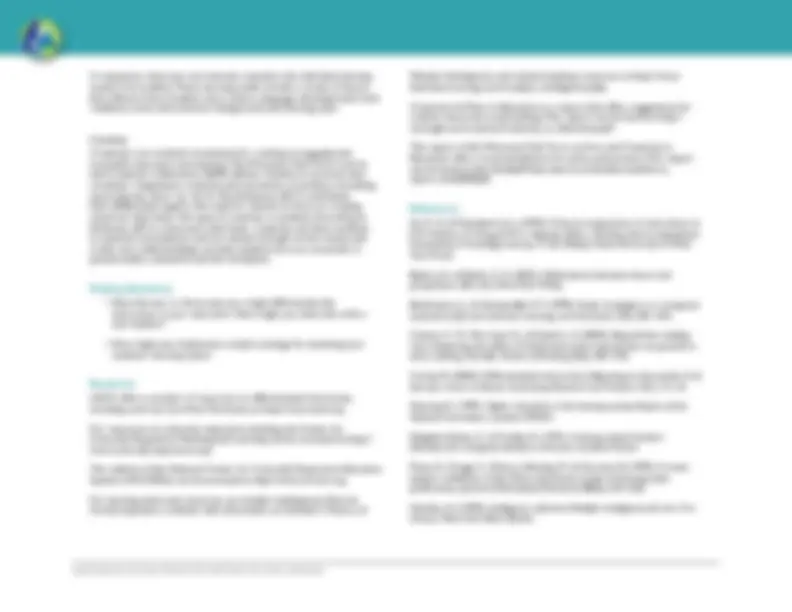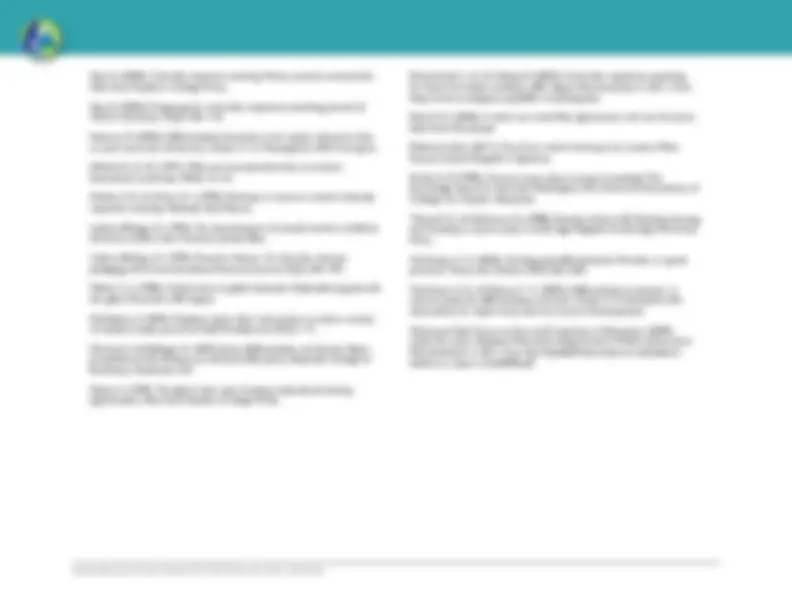




Study with the several resources on Docsity

Earn points by helping other students or get them with a premium plan


Prepare for your exams
Study with the several resources on Docsity

Earn points to download
Earn points by helping other students or get them with a premium plan
Community
Ask the community for help and clear up your study doubts
Discover the best universities in your country according to Docsity users
Free resources
Download our free guides on studying techniques, anxiety management strategies, and thesis advice from Docsity tutors
A responsive learning environment engages all students by providing a respectful climate where instruction and curriculum are designed to respond to the ...
Typology: Assignments
1 / 4

This page cannot be seen from the preview
Don't miss anything!



Meaningful learning happens in environments where creativity, awareness, inquiry, and critical thinking are part of instruction. Responsive learning environments adapt to the individual needs of each student and encourage learning by promoting collaboration rather than isolation of learners. Learning environments, whether classrooms, schools, or other systems, should be structured to promote engaged teaching and learning.
Research Summary
To be effective for all students, classroom learning environments must be responsive to a broad range of needs among a diverse student population. These diverse needs include cultural and linguistic differences as well as developmental levels, academic readiness, and learning styles. A responsive learning environment engages all students by providing a respectful climate where instruction and curriculum are designed to respond to the backgrounds and needs of every student.
Culturally Responsive Teaching
Research on culturally responsive teaching emphasizes the importance of teachers’ understanding the cultural characteristics and contributions of various ethnic groups (Smith, 1998) and showing respect toward these students and their culture (Ladson-Billings, 1995; Pewewardy & Cahape, 2003). Culturally responsive teaching is defined by Gay (2002) as “using the cultural characteristics, experiences, and perspectives of ethnically diverse students as conduits for teaching them more effectively” (p. 106).
Research on culturally responsive teaching has found that students both are more engaged in learning and learn more effectively when the knowledge and skills taught are presented within a context of their experience and cultural frames of references (Au & Kawakami, 1994; Gay, 2000; Ladson-Billings, 1995). Areas considered part of creating a culturally responsive learning environments are (1) understanding the cultural lifestyles of their students, such as which ethnic groups give priority to communal living and problem solving; (2) knowing differences in the modes of interaction between children and adults in different ethnic
groups; and (3) becoming aware of cultural implications of gender role socialization among different groups (Banks & Banks, 2001). To provide a culturally responsive learning environment teachers need to:
Further research asserts that culturally responsive teachers help students understand that knowledge is not absolute and neutral but has moral and political elements. This knowledge can help students from diverse groups view learning as empowering (Ladson-Billings, 1995; Tharp & Gallimore, 1988).
Strategies for designing curriculum and instruction for culturally diverse students are similar to the strategies for differentiating curriculum and instruction. In fact, Mulroy and Eddinger (2003) point out that the research on differentiation emerged, in part, because of the demand on schools to serve an increasingly diverse student population. Heacox (2002) asserts that classrooms are diverse in cognitive abilities, learning styles, socioeconomic factors, readiness, learning pace, and gender and cultural influences.
Differentiation Research on differentiation includes meeting the learning needs of all students through modifying instruction and curriculum to consider developmental level, academic readiness, and socioeconomic backgrounds, as well as cultural and linguistic differences. Tomlinson (2005) defines differentiated instruction as a philosophy of teaching based on the premise that students learn best when their teachers accommodate the difference in their readiness levels, interests, and learning profiles. In a differentiated learning environment, each student is valued for his or her unique strengths while being offered opportunities to learn and demonstrate learning through a variety of strategies (Mulroy & Eddinger, 2003). Hall (2002) states, “To differentiate instruction is to recognize students’ varying backgrounds, readiness, language, learning preferences, and interests and to react responsively” (p. 1).
According to Tomlinson (2005), who has written extensively on differentiation, three elements guide differentiated instruction: content, process, and product. Content means that all students are given access to the same content but are allowed to master it in different ways. Process refers to the ways in which the content is taught. Product refers to how students demonstrate understanding. Corley (2005) provides three questions that drive differentiation: (1) What do you want the student to know? (2) How can each student best learn this? and (3) How can each student most effectively demonstrate learning? Maker (1986) offers a framework through which differentiation can occur in the classroom:
In addition, researchers have found that the use of flexible grouping and tiered instruction for differentiation increases student achievement (Corley, 2005; Tomlinson & Eidson, 2003). Heacox (2002) describes differentiation as follows:
The focus is not on the adjustment of the students, but rather the adjustment of teaching and instructional strategies making it about learning, not teaching. The teacher is the facilitator who…puts students at the center of teaching and learning and lets his or her students’ learning needs direct instructional planning (p. 1).
Several studies conducted in elementary and middle school classroom have found that student achievement is increased in differentiated classrooms (Connor, Morrison, & Katch 2004; McAdamis, 2001). Tomlinson and Eidson (2003) emphasize the need to include the components of student readiness, student interest, and student learning profile in differentiating instruction. Students’ interests and learning profiles are often tied to their learning styles.
Learning Styles The body of research on learning styles has coalesced around the work of Howard Gardner, who introduced the theory of multiple intelligences in 1983. Gardner’s work suggests that the concept of a pure intelligence that can be measured by a single I.Q. score is flawed, and he has identified nine intelligences that people possess to various degrees. His theory asserts that a person’s type of intelligence determines how he or she learns best (Gardner, 1999).
Learning style refers to how a student learns, and the concept takes into account cultural background and social and economic factors as well as multiple intelligences. Beishuizen and Stoutjesdjik (1999) define learning style as a consistent mode of acquiring knowledge through study, or experience. Research has shown that the quality of learning at all levels of education (primary, secondary, and higher education) is enhanced when instruction and curriculum take into account individual learning styles (Dunn, Griggs, Olsen, Beasley & Gorman, 1995). Another study found that student learning improved when the learning environment was modified to allow students to construct personally relevant knowledge and to engage in the materials at different levels and from different points of view (Dearing, 1997).
Gay, G. (2000). Culturally responsive teaching:Theory, research, and practice. New York: Teachers College Press.
Gay, G. (2002). Preparing for culturally responsive teaching. Journal of Teacher Education , 53(2) 106–116.
Heacox, D. (2002). Differentiating instruction in the regular classroom: How to reach and teach all learners, Grades 3–12. Minneapolis, MN: Free Spirit.
Hilliard, A. G., III. (1991). Why we must pluralize the curriculum. Educational Leadership , 49(4), 12–16.
Hollins, E. R., & Oliver, E. I. (1999). Pathways to success in school: Culturally responsive teaching. Mahwah, NJ: Erlbaum.
Ladson-Billings, G. (1994). The dreamkeepers: Successful teachers of African American children. San Francisco: Jossey-Bass.
Ladson-Billings, G. (1995). Toward a theory of culturally relevant pedagogy. American Educational Research Journal , 32(3), 465–491.
Maker, C. J. (1986). Critical issues in gifted education: Defensible programs for the gifted. Rockville, MD: Aspen.
McAdamis, S. (2001). Teachers tailor their instruction to meet a variety of student needs. Journal of Staff Development , 22(2), 1–5.
Mulroy, H., & Eddinger, K. (2003, June). Differentiation and literacy. Paper presented at the Institute on Inclusive Education, Nazareth College of Rochester, Rochester, NY.
Nieto, S. (1999). The light in their eyes: Creating multicultural learning opportunities. New York: Teachers College Press.
Pewewardy, C. H., & Cahape, P. (2003). Culturally responsive teaching for American Indian students. ERIC Digest. Retrieved June 3, 2011, from http://www.ericdigests.org/2005-1/teaching.htm
Pink, D. H. (2006). A whole new mind:Why right-brainers will rule the future. New York: Riverhead.
Robinson, Ken. (2011). Out of our minds: Learning to be creative. West Sussex, United Kingdom: Capstone.
Smith, G. P. (1998). Common sense about common knowledge : The knowledge bases for diversity. Washington, DC: American Association of Colleges for Teacher Education.
Tharp, R. G., & Gallimore, R. (1988). Rousing minds to life:Teaching, learning, and schooling in social context. Cambridge: England: Cambridge University Press.
Tomlinson, C. A. (2005). Grading and differentiation: Paradox or good practice? Theory Into Practice , 44(3) 262–269.
Tomlinson, C. A., & Eidson, C. C. (2003). Differentiation in practice: A resource guide for differentiating curriculum. Grades 5–9. Alexandria,VA: Association for Supervision and Curriculum Development.
Wisconsin Task Force on Arts and Creativity in Education. (2009). A plan for action. Madison: Wisconsin Department of Public Instruction. Retrieved June 3, 2011, from ftp://doaftp04.doa.state.wi.us/doadocs/ taskforce_report_final2009.pdf